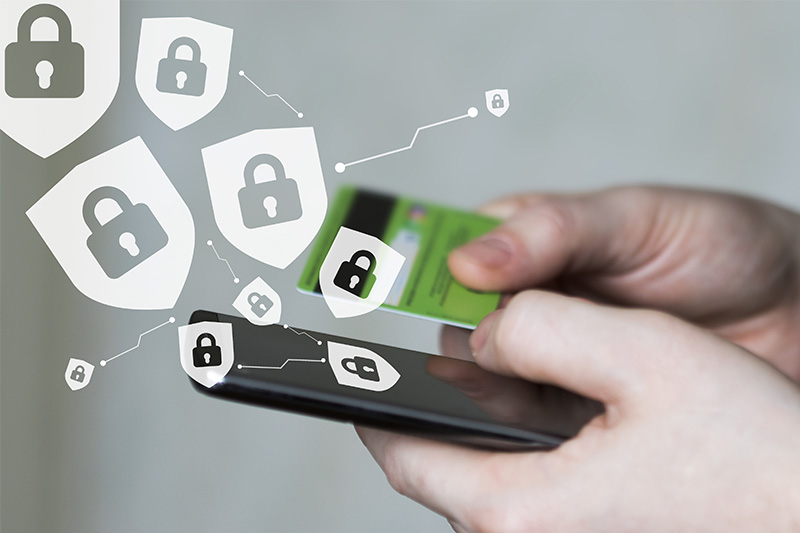
Defending Your Credit: Proactive Steps to Counter Credit Card Scammers
Debit and credit cards were introduced to limit cash transactions, and they have been a success. As per a report by the Federal Reserve Bank of San Francisco, roughly 51% of all transactions are settled using debit or credit cards, while roughly 26% are settled in cash.
Although it is more convenient to use a debit or credit card rather than a bulkier wallet loaded with cash, it has also become easier for scammers to lure their victims into elaborate scams.
A debit or credit card, also called “plastic money,” is more in demand and allows users to settle transactions regardless of the price of the goods and services that are being purchased. However, it has become easier for scammers to carry out illegal transactions by simply gathering the debit or credit card details of their victims.
Scammers employ several tactics; some are so elaborate that without the knowledge of their victims, these victims will end up giving in their sensitive details, which will allow scammers to commit financial fraud.
In this article, we will focus on the ways that scammers collect the debit and credit card details of their victims. These tactics can also serve as a red flag should you confront them in the future.
Table of Contents
ToggleTimes when your cards are at risk
Collecting the details of a debit or credit card is quite easy once scammers have targeted you for identity theft. It can take years just to repair your credit score since such scams do not take place immediately.
Physical theft: You can lose your wallet or purse containing your credit card in a public place like the subway or practically hand over your credit card to a scammer in a restaurant.
Dumpster diving: You can lose your credit card details if someone dives into your waste bin or if you have thrown away papers containing sensitive financial details. It is a good practice to shred important documents rather than throw them in the trash.
Mail theft: You can lose your credit card details in a mail theft. You might be waiting for a new card or the details of the cards, which may fail to turn up due to theft.
Phishing theft: You might receive a text, email, or message on your social media app containing a link that prompts you to take action. After clicking on that site, you might be redirected to a webpage, prompting you to fill in your sensitive details. These details are then diverted to the scammer, who will collect them and use them to commit scams.
Malware and viruses: It is advisable to refrain from entertaining any texts, emails, or messages on your social media app that are suspicious. Do not download any suspicious apps, as they might collect all your sensitive data and send it to scammers.
Shimming and skimming devices at ATMs: Be careful while swiping your card at an ATM. Scammers are known to attach shimming or skimming devices that record your card details.
Public WiFi Networks: Avoid using public WiFi while using credit card transactions or banking apps. Many public WiFi networks are notorious for having apps that will provide all your sensitive financial details.
Physically protecting your credit card
By taking the following steps, you can mitigate the risk of your financial details being stolen:
Chip reader credit cards: Although most modern credit cards come with a chip reader that will prevent your data from being collected by a skimming device should it be present in an ATM or while swiping,
Protect your wallet or purse: One of the best ways to protect your credit cards is by securing your wallet or purse. It is a good habit to take only one or two credit cards while going out. It would reduce your mental, physical, and financial trauma should you lose your wallet or purse in a public area.
Swiping your card: Always pay attention to your card while it is being swiped in a public area, like shopping in a mall or paying bills in a restaurant.
Sharing the details of your credit card: Avoid reading out your credit card details in a public place. You should give these details when you have complete privacy. The chances of anyone memorizing your card details cannot be ruled out.
Use a secured network while making a transaction.
Always check the URL of a website. If the website begins with “https,” then it is secured, compared to just “http,” where the webpage is not secured and your financial details are bound to be compromised if you are carrying out a transaction on it.
Another red flag to watch out for is the use of poorly constructed sentences filled with a lot of grammatical errors. Most scammers do not have a good command of the English language and can be easily spotted.
Use a reputable online retailer.
It is advisable to use a reputed online retailer while shopping rather than settling for one that is not. Scammers are known to set up fake retail online shops and are ready to collect the financial details of their unwary victims.
Use different cards for different services.
Having a dedicated card for a service or shopping can help you prevent your cards from falling victim to identity theft. You can view your bank statement and be alerted if you happen to come across any unauthorized payments.
You can have one card dedicated to utility and energy bills, one for shopping and groceries, and so forth.
Limiting your credit card amount
Having a limit on your credit card is one of the easiest ways to mitigate your losses should you be a victim of an online scam or fraud.
Making a list of your credit cards
Normally, most of us have multiple credit cards instead of one. You should make a list of all the credit cards that you possess and destroy any that have expired or that you no longer subscribe to.
Using a credit card
The best way to complete a transaction is to use a credit card instead of a debit card. When you use a debit card, you pay off that amount instantly, compared to a credit card, where you end up paying off your bills as much as you want to. You can always ask for a chargeback on a credit card amount if it is a scam or fraud. Very few banks offer such services on a debit card.
Conclusion
Make it a habit to go through your bank account statements regularly. Keeping track of all your credit cards is the best way to detect if you have fallen victim to any online credit card scams or fraud. Each year, you are entitled to a free credit score report from your credit rating agency. Check for any unauthorized transactions and report them immediately to them so they can freeze your account until the investigation has been completed.


